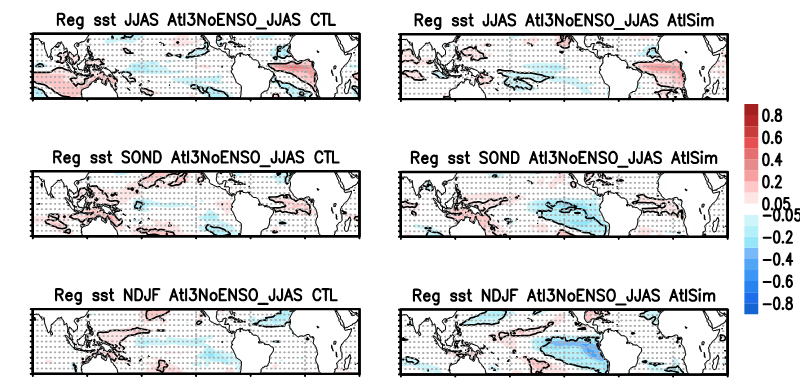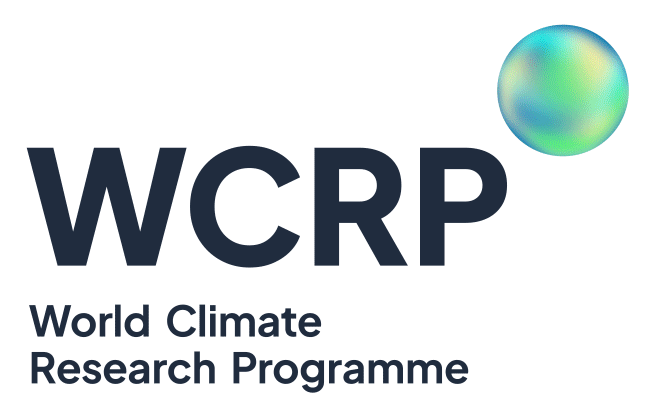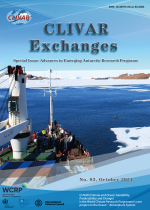Impact of extratropical thermal forcing in the simulation of tropical Atlantic-Pacific basin interactions

Figure: Regressions of the JJAS (a,d), SOND (b,e) and NDJF (c,f) SST (C) onto the JJAS Atl3 index for the control (CTL; a,b,c) and the perturbed (AtlSim; d,e,f) simulations. Gray (black) contours show significant correlations at the 95% (90%) level.
Tropical basin interactions (TBI) are receiving increasing attention, as illustrated by the establishment of the CLIVAR Tropical Basin Interaction Research Focus. A recent paper on this subject by researchers at the University Complutense of Madrid (https://doi.org/10.1175/JCLI-D-21-0546.1) examines the role of tropical convection, specially the location of the Inter Tropical Convergence Zone (ITCZ), in the occurrence of the two main tropical Atlantic-to-tropical Pacific basin interactions: the equatorial Atlantic to equatorial Pacific teleconnection, and the North Tropical Atlantic to equatorial Pacific teleconnection. For this purpose, sensitivity experiments are performed with a CGCM in which the incoming radiation in the Atlantic sector of the Southern Ocean is reduced with impacts on tropical convection.
The model responds to the cooling by obtaining a warmer equatorial Pacific and an Atlantic ITCZ located nearer to the equator, thus improving its simulated climatology. Other changes include an enhanced interannual variability in the tropical Atlantic, a westward extension of the SST anomalies associated with the Atlantic Niño mode, and an equatorial Pacific thermocline more stratified, variable and shallower in the west. The modified model's climatology favors connections between the equatorial Atlantic and Pacific climates, by (1) shifting westward the convection anomalies associated with the Atlantic Niño, and (2) resulting in an equatorial Pacific more sensitive to atmospheric perturbations both local and remote due to the different characteristics of its thermocline.
In summary, extratropical thermal forcing can modify the background climatologies of the equatorial Atlantic and Pacific basins affecting the representation of tropical modes of variability in these basins as well as their teleconnections. The remote impact of the extratropical forcing results in changing of the tropical regions of maximum convection and surface convergence, including the ITCZ. These results contribute to enhancing the climate modelers’ awareness that improving the extratropics can have both regional and remote effects, including changes in the tropical modes of variability.














Add new comment